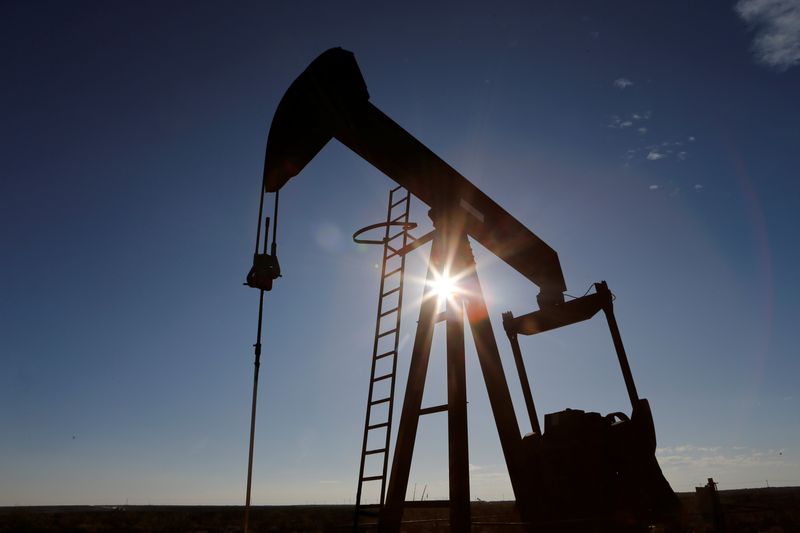Commodities
Oil prices settle lower to start 2024 as supply concerns ease


© Reuters. FILE PHOTO: The sun is seen behind a crude oil pump jack in the Permian Basin in Loving County, Texas, U.S., November 22, 2019. Picture taken November 22, 2019. REUTERS/Angus Mordant/File Photo
By Georgina McCartney
HOUSTON (Reuters) -Oil prices closed the first trading session of 2024 lower as expectations for interest rate cuts waned and on easing concerns that tensions in the Red Sea will disrupt supplies.
settled at $75.89, down by $1.15 or 1.5%. U.S. West Texas Intermediate crude settled at $70.38 a barrel, down by $1.27 or 1.8%.
Prices fell as investors tempered expectations about interest-rate cuts in 2024. Lower interest rates reduce consumer borrowing costs, which can boost economic growth and oil demand.
The dollar also strengthened on Tuesday, while stock prices slipped, further pressuring oil lower. A stronger dollar makes oil more expensive for investors holding other currencies.
Oil prices had climbed around $2 in earlier trading following attacks on vessels in the Red Sea by Houthi rebels over the weekend, and the reported arrival of an Iranian warship on Monday.
“The market is correcting itself in so far as there have been no supply disruptions and they think it is unlikely that the Iranian warship will engage with American warships,” said Andrew Lipow, president of Lipow Oil Associates.
“Clearly, the oil market will move higher if shots are fired,” Lipow added.
On Sunday, U.S. helicopters repelled an attack by Iran-backed Houthi forces on a container vessel operated by Danish shipper Maersk in the Red Sea. On Monday, an Iranian warship had entered the Red Sea, according to the semi-official Tasnim news agency.
Denmark’s Maersk and German rival Hapag-Lloyd said their container ships would keep avoiding the Red Sea route that gives access to the Suez Canal.
A wider conflict could close crucial waterways for oil transportation.
A Reuters survey of economists and analysts predicted Brent crude would average $82.56 a barrel this year, up slightly from the 2023 average of $82.17, with weak global growth expected to cap demand. Geopolitical tensions, however, could support prices.
In China, investor expectations of economic stimulus measures rose after manufacturing activity shrank in December for a third month, government data showed on Sunday.
Any such stimulus could boost oil demand and support crude prices.
Separately, OPEC+ plans to hold a meeting of its Joint Ministerial Monitoring Committee (JMMC) in early February, though an exact date has not been decided, three sources from the alliance said.
Commodities
Oil prices rise; U.S. crude inventories plunge, Russia-Ukraine truce eyed
Commodities
India’s Reliance to stop buying Venezuelan oil over US tariffs, sources say
Commodities
Oil prices climb on Venezuela supply worries

 Forex3 years ago
Forex3 years agoForex Today: the dollar is gaining strength amid gloomy sentiment at the start of the Fed’s week

 Forex3 years ago
Forex3 years agoUnbiased review of Pocket Option broker

 Forex3 years ago
Forex3 years agoDollar to pound sterling exchange rate today: Pound plummeted to its lowest since 1985

 Forex3 years ago
Forex3 years agoHow is the Australian dollar doing today?

 Cryptocurrency3 years ago
Cryptocurrency3 years agoWhat happened in the crypto market – current events today

 World3 years ago
World3 years agoWhy are modern video games an art form?

 Commodities3 years ago
Commodities3 years agoCopper continues to fall in price on expectations of lower demand in China

 Economy3 years ago
Economy3 years agoCrude oil tankers double in price due to EU anti-Russian sanctions



























